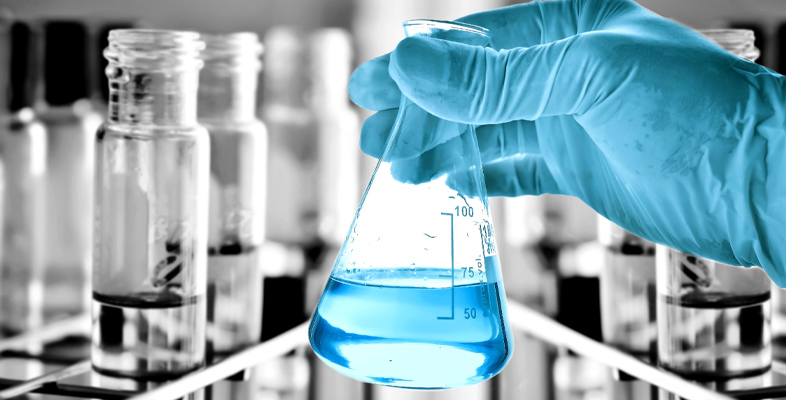
Electrolysis
Electrons and Ions
Metals have a matrix of positively charged ions and mobile electrons which transfer electric charge. All metals are thus good conductors of electricity. A cell is such that it drives the electrons around the circuit by flowing electrons from negative to positive terminal of the cell. Molten or aqueous ionic compounds can conduct electricity due to moving ions however solid ionic compounds don’t.
Electrolytic Cell
Electric charge can be used to bring about a chemical change in a process called electrolytic help. It has two electrodes that are placed in a liquid with mobile ions. The liquid is called an electrolyte. This maybe a molten or an aqueous solution of an ionic compound. The two electrodes must not each other. When a cell is connected to the electrodes they become oppositely charged. Positive terminal is called anode and negative terminal is called cathode. The anode attracts negative ions(anions) and cathode attracts positive ions(cations).
The process of using an electric charge through a liquid to bring about a chemical change is called the process of electrolysis.
Anions lose electrons when attracted to anode and hence are oxidized.
Cations gain electrons when attracted to cathode and hence are reduced.
Electrolysis of molten lead (II) bromide
When ionic compounds undergo electrolysis through carbon electrodes the ions present are from the ionic compound only. When a current is passed through molten (II) bromide, the Pb+2 attracts towards the negative electrodes. And hence the equation for it is,
Pb+2 (l) + 2e à Pb(l)
The negatively charged bromide ions move to the positive electrodes.
2Br-(l) à Br2(l) + 2e
With every one bromine molecule formed two electrons are released which help form one atom of lead.
Electrolysis of water (dilute sulphuric acid)
Because water is a poor conductor, sulfuric acid is added to increase the concentration of ions. Inert platinum ions are used for this electrolysis.
At Anode,
4OH-(aq) à O2(g) + 2H2O(l) + 4e oxidation
At Cathode,
4H+(aq) + 4e à 2H2(g) reduction
Preferential discharge
The products of an electrolysis will depend on a few factors such as,
The ease at which ions are discharged
The concentration of the ions
The nature of the electrodes.
Ease of discharge of anions
Electrolysis of Sodium Chloride Solution
the electrolysis of sodium chloride has Na+, Cl-, and OH- and H+ ions. The ions that are discharged are both determined by the ease of discharge and also by their concentration.
In the electrolysis of dilute sodium chloride solution, oxygen is discharged at the anode and hydrogen at the cathode. In terms of ease of discharge, as H+ ions are easier to discharge than Na ions, regardless of the concentration hydrogen ions will always discharge at the cathode.
2H+ (aq) + 2e à H2 (g)
However, chloride ions and OH ions are both very close in terms of ease of discharge and so if the chloride ions are higher in concentration they will discharge at the cathode.
2Cl- (aq) à Cl2 (g) + 2e
The electrolysis of concentrated sodium chloride solution is the basis of an industrial process where the products are chlorine gas at anode, hydrogen gas at the cathode, which also leaves behind a sodium hydroxide solution.
Electrolysis of copper (II) sulfate solution
Copper (II) sulfate solution contains Cu2+, H+, SO42-- and OH- ions and in this electrolysis inert electrodes such as graphite or platinum is used.
At Anode,
4OH- (aq) à O2(g) + 2H2O (l) + 4e oxidation
At cathode,
2 Cu2+((aq) + 4e à 2Cu (s) reduction
The reaction using copper electrodes would look as such,
At anode,
Cu(s) à Cu2+((aq) + 2e
At cathode,
Cu2+(aq) + 2e àCu(s)
This is important to understand the industrial process of purification of copper.
Products of Electrolyzing the electrolytes.
Industrial Application Of Electrolysis
Electroplating
By using electrolysis, a base metal is plated by an expensive metal, such as chrome makes a metal more attractive and protects it making it easier to clean. The base metal must be cleaned and is usually done by dipping it into an acid solution which removes the oxide layer. It is then attached to the cathode layer and the metal that needs to plated is connected at anode. The electrolyte used is also a solution of soluble salt of anode metal.
The Industrial Purification Of Copper By Electrolysis
Copper is to be extracted from sulfide ores. The impure copper is made into a cathode ingot and cathode is a block of pure copper. The equation at the electrodes are,
At Anode,
Cu(s) à Cu2+(aq) + 2e copper atoms oxidized to ions
At Cathode,
Cu2+(aq) + 2e à Cu(s) copper (II) ions reduced
The impurities are accumulated below copper anode.
Aluminium Extraction
It is extracted from bauxite an aluminum oxide ore. For this process, solution of alumina in cryolite is used due to lower melting point. Using graphite electrodes, the reaction would be such,
Anode: 6O2- (l) à 3O2 (g) + 12e
Cathode: 4Al3+ (l) +12e à 4Al (l)
Due to high reaction temperature, oxygen reacts with carbon electrodes and forms CO2 gas. So anodes must be replaced at regular intervals.
